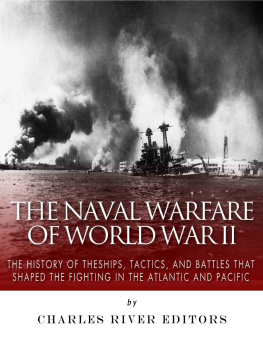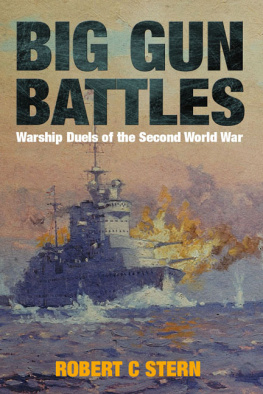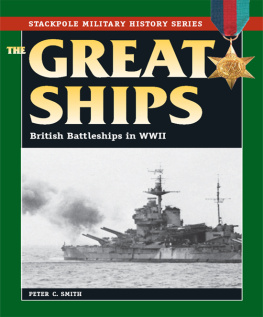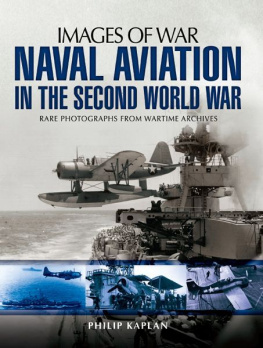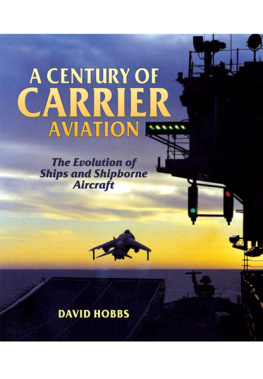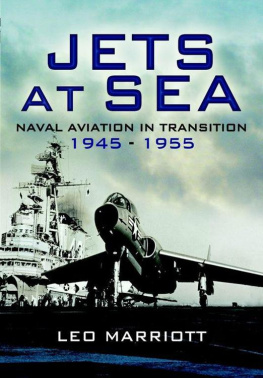The Naval Warfare of World War II: The History of the Ships, Tactics, and Battles that Shaped the Fighting in the Atlantic and Pacific
By Charles River Editors
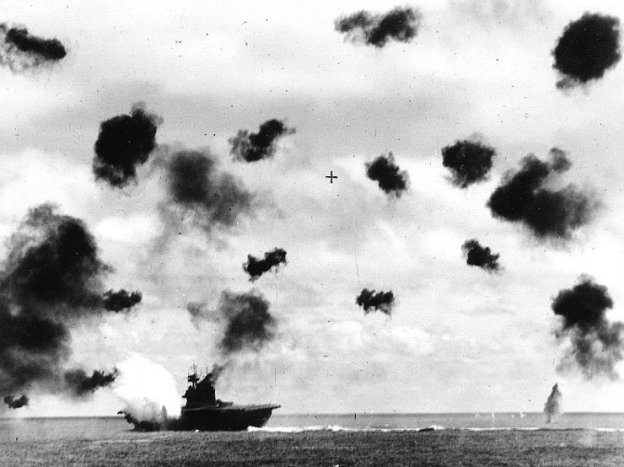
The U.S.S. Yorktown fighting during the Battle of Midway, just as a torpedo hits the boat.
About Charles River Editors

Charles River Editors provides superior editing and original writing services in the digital publishing industry, with the expertise to create digital content for publishers across a vast range of subject matter. In addition to providing original digital content for third party publishers, we also republish civilizations greatest literary works, bringing them to new generations of readers via ebooks.
Sign up here to receive updates about free books as we publish them , and visit Our Kindle Author Page to browse todays free promotions and our most recently published Kindle titles.
Introduction
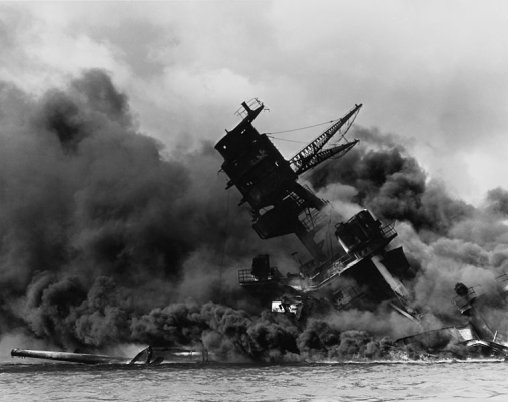
The USS Arizona exploding during the attack on Pearl Harbor
The Naval Warfare of World War II
Naval combat underwent a significant metamorphosis during World War II. Nazi Germany and Imperial Japan launched some of the most powerful battleships ever to sail the world's oceans, yet the conflict witnessed the emergence and triumph of the aircraft carrier as the 20th century's true monarch of the seas. Submarine warfare expanded and developed, while aircraft technology and doctrine experienced several revolutionary changes due to the unforgiving demands of the new combat environment.
Popular accounts of World War II frequently focus on the dominance of German panzers over the more lightly armored, lightly armed tanks of the Soviets, British, and Americans, or the superb fighting skills of the Waffen SS and ordinary Wehrmacht soldiers. Germany's land forces enjoyed an undoubted advantage over their enemies thanks to excellent vehicle technology, while German soldiers slaughtered vast numbers of Soviet conscripts and proved formidable opponents even to their better-trained English and American counterparts.
However, the Axis failed to secure either the seas or the skies, and their defeat in these theaters ultimately led to their doom. Many highly advanced aircraft designs languished on the drawing boards of Junkers and Messerschmitt engineers, left undeveloped due to high command disinterest or simple lack of resources. The most advanced fighters developed by Nazi Germany and Imperial Japan were equaled or outmatched by such aircraft as the U.S. F6F Hellcat (which achieved kill ratios of between 13 to 1 and 19 to 1 against Japanese Zero fighters) or P-51 Mustang.
America, with its vast productive resources and immense manufacturing capacity, single-handedly supplied the materiel that saved Britain and the Soviet Union from defeat. It did so by controlling the sea lanes and eventually ending much of the threat of U-boat attack, supplying England and Russia with staggering quantities of food, weapons, raw materials, trucks, tanks, aircraft, prefabricated buildings, boots, ammunition, medicines, and even entire locomotives and sets of railway rolling stock. Over 50% of the Soviet Union's entire wartime supply base, from food and clothing to weapons and vehicles, came directly from the United States.
In time, the American and British navies progressively destroyed their Axis counterparts, ensuring clear sea lanes, high strategic mobility for seaborne invasions, and large-scale air support that eventually battered the Axis armies into submission. Just as the Luftwaffe paralyzed Poland's defenders in 1939 with air superiority, so the Allies' mastery of naval and aerial warfare turned the tables to paralyze the Nazis and Japanese: The fate of Germany and Japan was sealed [...] by the many-layered application of Anglo-American air and sea power. The totality of this pressure [...] eventually choked off Axis mobility. [...] Air and sea power could operate throughout the productive process, not only to affect the battlefield, but to determine how much and what kinds of military equipment were produced and deployed. (O'Brien, 2015, 480).
Indeed, the ultimate weapon of World War II proved to be not a powerful tank or a specific type of aircraft, but a gigantic piece of military hardware combining the newly augmented power of both air and naval operations, the aircraft carrier. Every diverse element of the military machine had a crucial role to play, but the aircraft carrier stood head and shoulders above any other single system as the key to victory in the mid 1940s.
The Naval Warfare of World War II: The History of the Ships, Tactics, and Battles that Shaped the Fighting in the Atlantic and Pacific looks at the course of the fighting in the Atlantic and Pacific during the war, and the changes both sides made in an effort to establish supremacy. Along with pictures of important people, places, and events, you will learn about the naval warfare of World War II like never before.
Chapter 1: Fighting in the Atlantic

A picture of British officers on a destroyer thats part of a convoy
The Battle of the Atlantic represented an arms race on multiple levels, including both offensive weapons systems and defensive countermeasures. While the Allies honed their convoy technology and improved its use, the Germans added new features to their U-boats, enabling them to move faster, hit harder, and attempt to escape after an attack in a more effective manner. The back-and-forth exchange witnessed the Germans discovering a fresh weakness, exploiting it, and then, after a brief period of notable success, losing ground to new countermeasures. In this race, the Allies eventually outpaced the Axis, leading to the effective defeat of the U-boats and their reduction to a mere annoyance later in the war.
The stakes of this naval struggle remained very high throughout the war. America's control of the sea lanes provided Britain with food and weaponry, while the Lend-Lease program supplied the Soviets with materiel without which their defeat would have been nearly assured. Alongside tens of thousands of trucks, locomotives, tanks, cars, motorcycles, artillery pieces, 15 million pairs of boots, 14 billion pounds of food (much of it high-calorie processed meat), and countless rounds of ammunition, the Americans also supplied the USSR with a wide range of raw materials, brought in by sea.
Without U.S. control of the sea lanes, the Soviets would have foundered, as the American supply of one vital metal aluminum to their quasi-hostile allies demonstrates: The Soviet Union, however, was desperately short of aluminum. When Harry Hopkins paid his first visit to Josef Stalin in July 1941 to ask the Soviet dictator what the country needed to keep fighting in light of the German invasion, the number one priority he was given was immediate aluminum shipments so that the Soviet Union could build more aircraft. From then until the end of the war, the United States poured aluminum into the Soviet Union. By 1943 it was providing the Soviets more of the metal then was actually allocated to the entire United States Navy. (O'Brien, 2015, 64).
In abandoning the creation of aircraft carriers, the Nazis unwittingly gave up any chance of truly controlling the Atlantic. The U-boats struck like ambush predators, and certain classes of land-based aircraft joined the fray also, but the German lack of aircraft carriers crippled their ability to carry out modern fleet actions and achieve decisive victory at sea.

